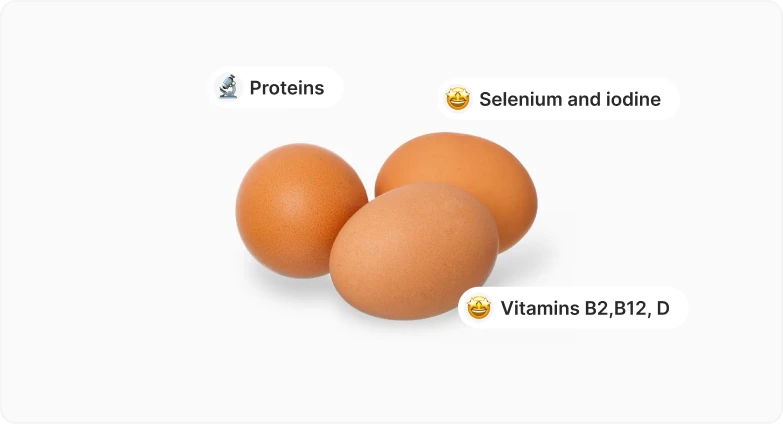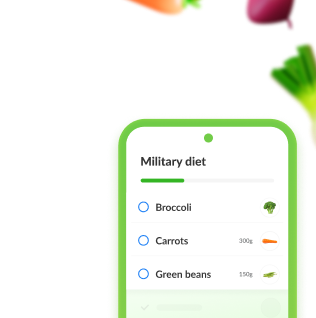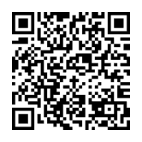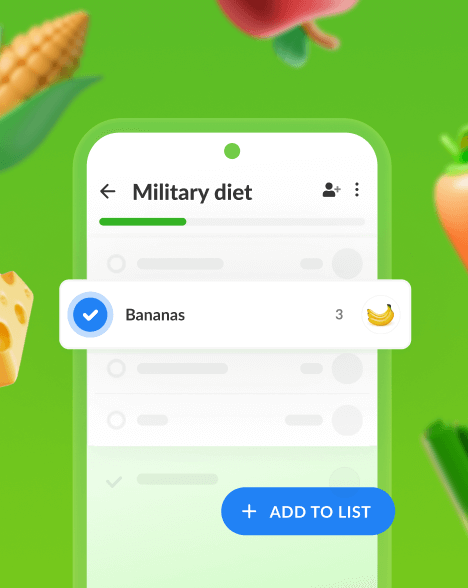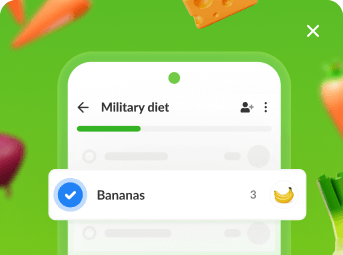Privacy Policy | Terms of services | Cookies Policy | © 2006-2024 Listonic. All rights reserved. Listonic Dev, and Listonic Ads are part of Listonic.
Military Diet Food List (+ Shopping List and PDF)
July 11, 2023
The military diet, also called the 3-day diet, is a short-term eating plan that involves consuming low-calorie meals with the goal of quick weight loss. The diet follows a strict three-day cycle, followed by four days of normal eating, and this pattern is repeated until the desired weight loss is achieved. In this article, we will delve into the specifics of the military diet, focusing on its typical 3-day plan. Additionally, we have provided a shopping list to assist you in preparing for your military diet journey.
Table of contents
Military Diet Shopping List
Military Diet Guidelines
Military Diet Food List Breakdown
What Else to Keep in Mind?
Conclusions
Military Diet Shopping List
Military Diet Guidelines
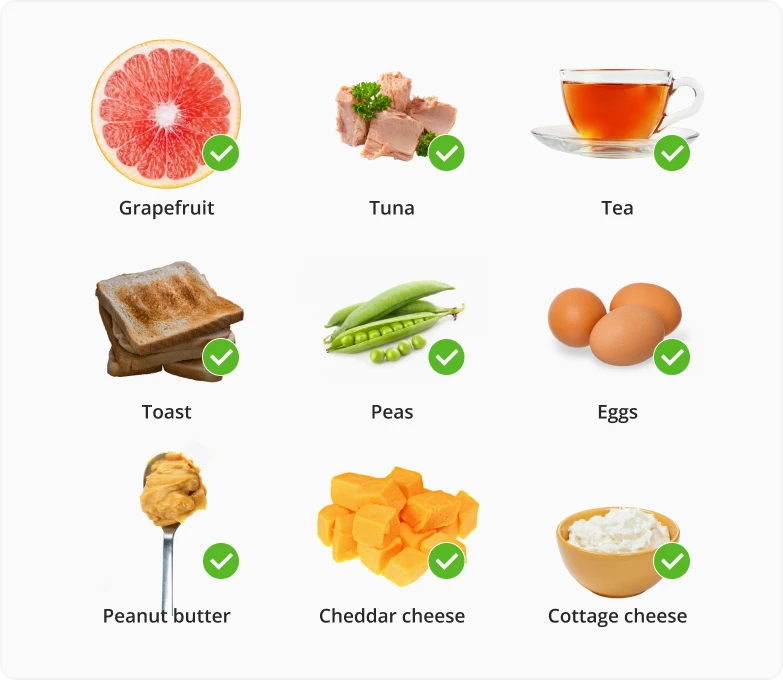
The military diet operates on several key rules designed to facilitate rapid weight loss.
Firstly, you should consume a small amount of calories over the course of three consecutive days. This restriction is followed by four days of normal eating, creating a cyclic pattern.
Secondly, the diet relies on a specific meal plan consisting of carefully selected foods. Each meal is composed in such a way that it includes a combination of protein, fruits, vegetables, grains, dairy/desserts, and beverages. This approach is supposed to provide essential nutrients while keeping calorie intake low.
Another principle of the military diet is the inclusion of intermittent fasting. The diet’s structure promotes a fasting period between dinner and breakfast on the following day, typically lasting around 12-16 hours. This fasting period is believed to enhance fat burning and improve metabolism.
Lastly, when on the military diet, you should control the size of your meals. You are encouraged to consume specific quantities of each food item, ensuring portion control and effective calorie intake management.
It’s important to note that while the military diet may lead to short-term weight loss, it may not be suitable for everyone, and its long-term effectiveness and sustainability are debated.
Military Diet Food List Breakdown
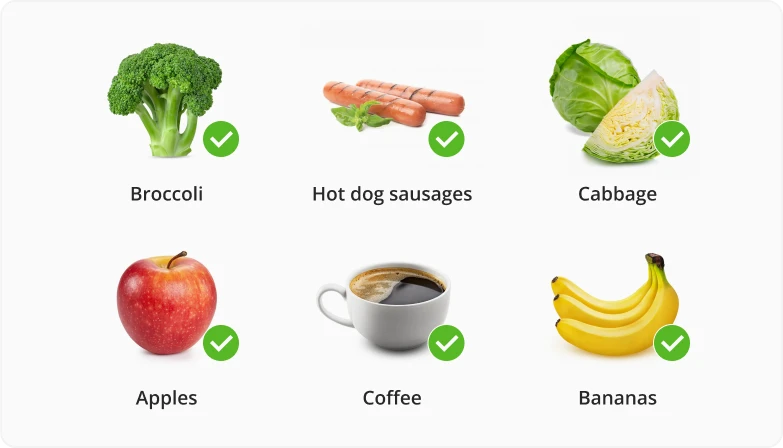
Proteins
They are a key part of the military diet, as they prevent the loss of muscle mass despite a significant reduction in calories.
You should include tuna, chicken, sausages, cottage cheese, eggs, and peanut butter to fulfil your dietary requirement for proteins. These rich sources offer key amino acids to keep you feeling satiated throughout the day – it is an essential aspect when going through a calorie-restricted diet.
Vegetables
They are a vital part of the military diet because of their low-calorie content and high levels of fiber, vitamins, and minerals. To promote satiety despite the restricted calorie intake, meal plans often include green beans, broccoli, cabbage, and carrots. These nutrient-rich vegetables not only meet nutritional needs but also contribute to the overall volume of the meals.
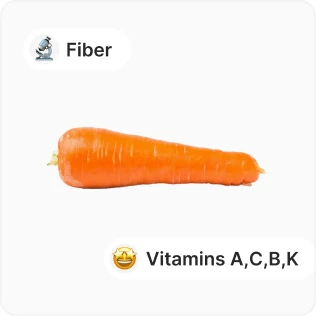
Fruit
You can increase the health benefits by including fruit in your diet, as it offers a rich source of natural sugars, essential vitamins, minerals and dietary fibre.
The military diet often recommends including grapefruit due to its unique properties alongside bananas and apples.
Integrating fruits into this dietary plan introduces more variety, adds a hint of natural sweetness and improves the appeal of the meals.
Grains
To maintain an adequate carbohydrate intake on the military diet, you are encouraged to consume grains like toast and saltine crackers. While this diet is not particularly high in carbohydrates, these grain products boost your energy levels to support you throughout the day.
Moreover, adding whole wheat toast and saltine crackers to your dishes can improve both their taste and texture, making them more enjoyable.
Dairy and Desserts
For added pleasure during the military diet, limited portions of dairy products and desserts are permitted – including vanilla ice cream and cheddar cheese. They help you combat cravings and make your diet more satisfying.
Nevertheless, you should enjoy these products in moderation due to their high calorie content.
Beverages
The main drinks permitted on the military diet are coffee, tea, and water. Consuming coffee and tea without added sugar or cream can supply a significant dose of energy and contribute to appetite management. Certainly, water is the key element for proper hydration – it assists in digestion and promotes overall well-being.
Military Diet 3-day Plan
Day 1
Breakfast: Usually includes a slice of toast, 2 tablespoons of peanut butter, half a grapefruit, and a cup of coffee or tea.
Lunch: Consists of a slice of toast, half a cup of tuna, and a cup of coffee or tea.
Dinner: Involves 3 ounces of meat (such as chicken or beef), a cup of green beans, half a banana, a small apple, and a cup of vanilla ice cream.
Day 2
Breakfast: Often includes a slice of toast, a hard-boiled egg, and half a banana.
Lunch: Consists of a hard-boiled egg, a cup of cottage cheese, and five saltine crackers.
Dinner: Involves two hot dog sausages, a cup of broccoli or cabbage, half a cup of carrots, half a banana, and half a cup of vanilla ice cream.
Day 3
Breakfast: Usually includes a slice of cheddar cheese, five saltine crackers, and a small apple.
Lunch: Consists of a slice of toast and a cup of tuna.
Dinner: Involves one cup of cottage cheese, one hard-boiled egg, and half a cup of vanilla ice cream.
Get a Military Diet Grocery List on Your Phone!
Add & remove items
Sort items by store aisles
Share the list with your partner

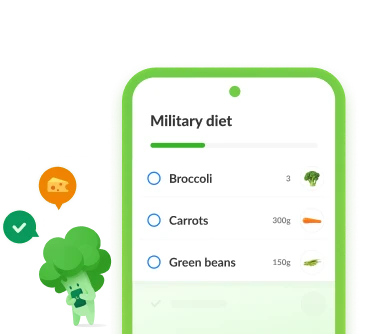
What Else to Keep in Mind?
What Foods to Avoid?
Although the military diet specifies which foods to include in your meal plan, it does not directly recommend avoiding any foods. Nevertheless, the 3-day eating plan of this diet excludes certain food categories.
High-fat foods: You should avoid or limit the consumption of foods that are high in saturated and trans fats. Examples of such products include fried foods, fatty cuts of meat, butter, and full-fat dairy products - all of them contain a lot of calories per portion. Consuming these types of foods in large amounts may derail your weight loss efforts.
Sugary foods and beverages: The military diet generally advises against the overconsumption of sugary products. This includes sugary snacks, candies, breakfast cereals, soda, and other sweetened beverages. These items are abundant in calories and offer minimal nutritional value.
What Are The Cons of a Military Diet?
While some people may experience temporary weight loss after following the military diet, you should be aware of its potential risks and limitations:
Unsustainability: This diet is very restrictive, with a limited choice of food items and a low calorie intake. It may turn out to be unsustainable or unenjoyable, and may cause you to give up this diet altogether.
Nutritional Deficiencies: This dietary pattern is not well-balanced and may not provide all the essential nutrients your body needs for optimal health. The diet's restrictive nature may result in deficiencies in vitamins, minerals, fiber, and healthy fats.
Potential Muscle Loss: Because of its low-calorie nature, the military diet could potentially lead to the loss of muscle mass.
Focuses on Weight Loss, Not Overall Health: The primary goal of the military diet is a rapid weight loss rather than improvement of your well-being. This emphasis on immediate weight reduction may lead to eating disorders and other health problems.
Conclusions
In this article, we’ve provided an overview of the principles of the military diet, which is a short-term eating plan created to help you lose weight quickly. We’ve also listed recommended foods for each category, and included a shopping list to help you get started on your military diet journey.
